| View previous topic :: View next topic |
| Author |
Message |
alex ph

Joined: 16 Mar 2013
Posts: 1669
|
 Posted: Sun Jan 21, 2018 5:33 pm Post subject: Re Topcor 2.8/35 vs. Konica Hexanon 2.8/35 - surprise Posted: Sun Jan 21, 2018 5:33 pm Post subject: Re Topcor 2.8/35 vs. Konica Hexanon 2.8/35 - surprise |
 |
|
alex ph wrote:
Recently I put a question how to get rid of some lenses without major regrets. One of the best, and most pleasant, replies that came from the forum members was: try to get some more valuable or more special items. Why not? This is what I said to myself and made a purchase. I have been for long curious about a Re Topcor lenses. Having an APS-C Sony Nex, one of the most versatile options is a 35mm lens which makes the set "normal". So I opted not to wait for a special occasion, seen their relative rarity (which, I presume, is highly related to the very activity of the forum members). I got a BIN and entered into possession of my most expensive single lens acquisition by that day.
Looking in the internet at pictures taken with Topcors in bright sunny days and often including close distance objects that gives to the background a tremendous OOF touch, I was expecting something really special. To appreciate this specialty I put myself immediately to compare this very well built Topcor with a more frequently found and slightly less appreciated, but really great and beloved Konica Hexanon 2.8/35.
Here is the the couple in question. Both have a large front glass, Re Topcor has 49mm while Hexanon having a larger 55mm.
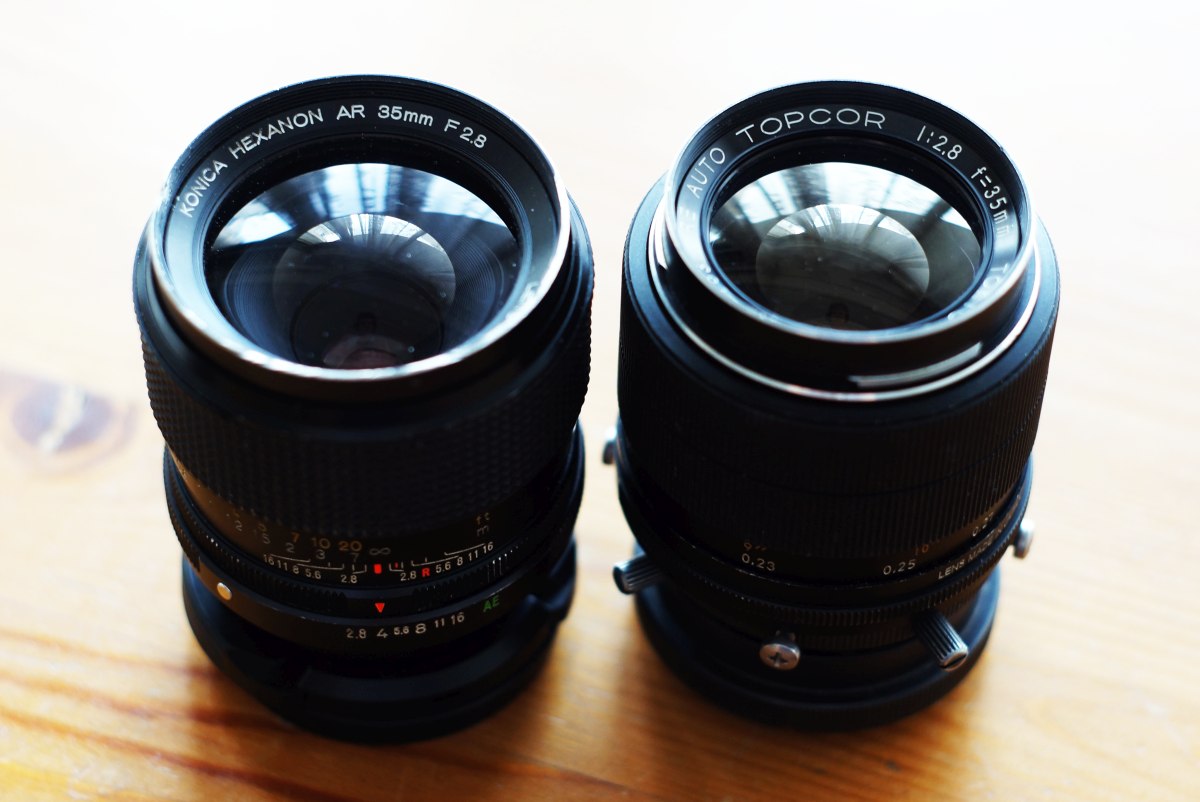
I first did some quick and most esthetically poor shots of test and comparison. And, frankly speaking, the results puzzled me. I will turn back later to that point. Then I went out to shoot the real world, under the grey skyes. And here I discovered that maybe I like more the way Topcor renders shiny and crhomed surfaces, as it puts an accent on them, as well as on magenta and green and blue tones in general. Briefly speaking, it seems that Topcor tends to undeline the cool extremity of the colour spectre more than Hexanon. While Hexanon gives an image which is closer to real life, and I appreciate that no less. These nuances a part, both give a very good output, even in bad weather and weak light.
But what about the recognizable rendition of Topcor that should pop out once you put the lens on your camera? Here I got my first puzzle. Could you tell which shot is made with which lens?
#1
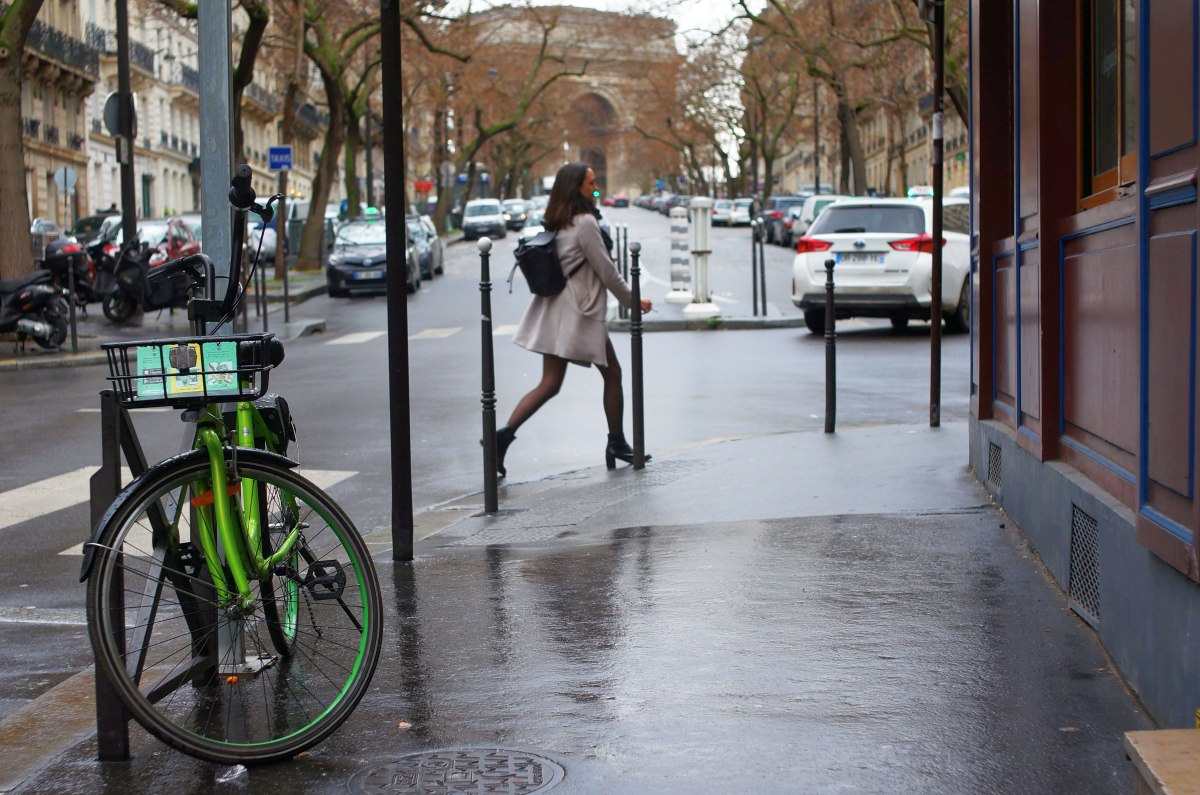
#2
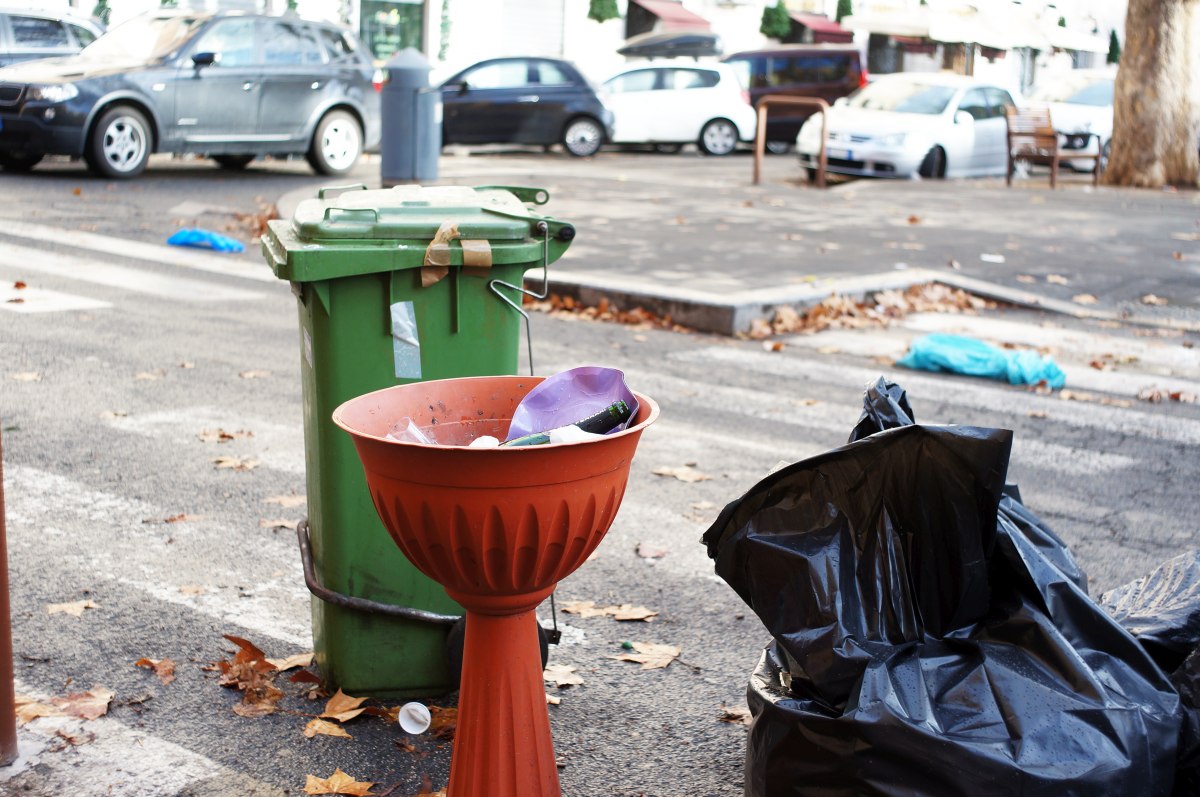
Well, I imagine, this is not very difficult for those specific shots, as Topcor favours magenta and chrome. So, the first is Topcor, the second is Hexanon.
And here is a couple more of real life shots, this time in the evening lights.
#3
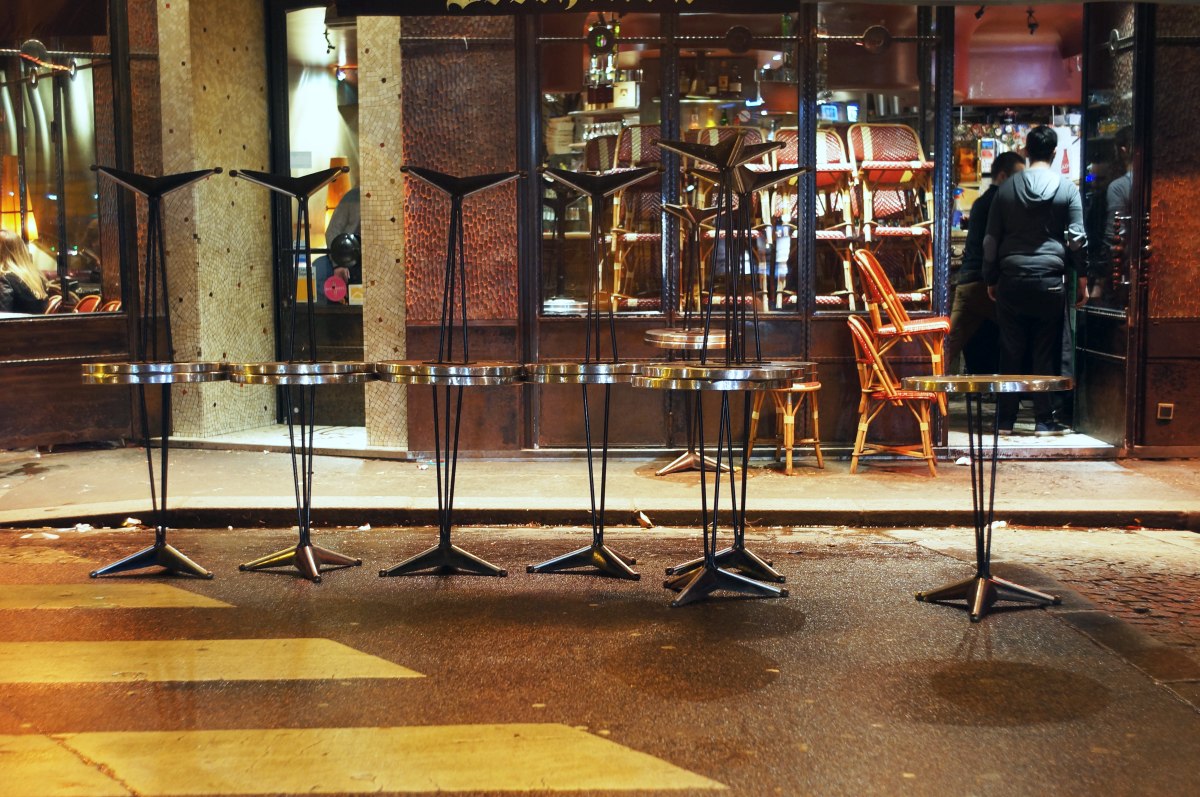
#4
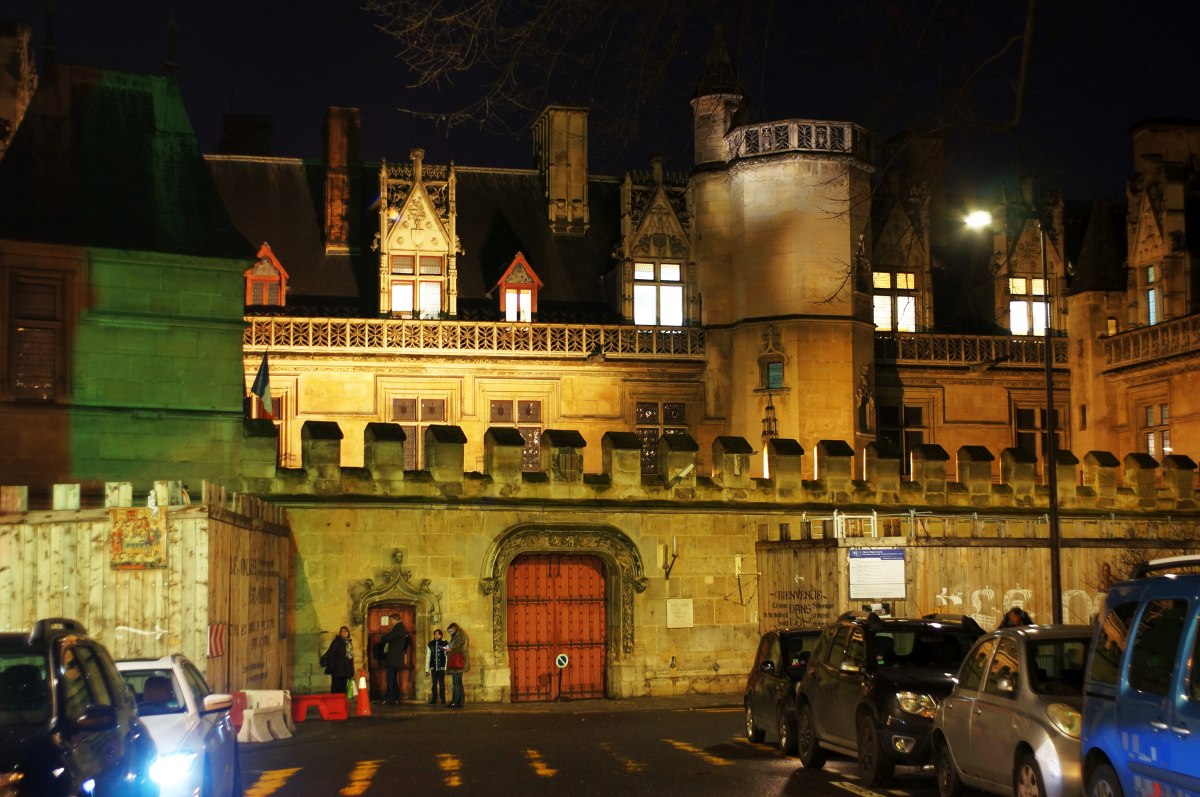
When the lights are off, this makes it makes more difficult to say which one is which. The evening shots are tweaked harder to reduce red overtones and some other excesses of how the Nex processes by default lowlight jpgs. But even though, it sdeems to me that shiny surfaces are better and nicer rendered with Topcor. Here, once again, first goes Topcor and Hexanon follows.
And now time for suprise. Here are some test shots I took under mostly blush light, in order to peep sharpness and colours. From the very beginning I did not expect much of contrast, especially in wide open shots (maybe it is a good general way to compare lenses, other than under bright sun?). But I expected that Topcor will easily outperform Konica which is sometimes criticised for lack of sharpness and abberations. So long so well, which lens goes for which shot?
Here is the test situation first. It is taken with both lenses wide open:
#5
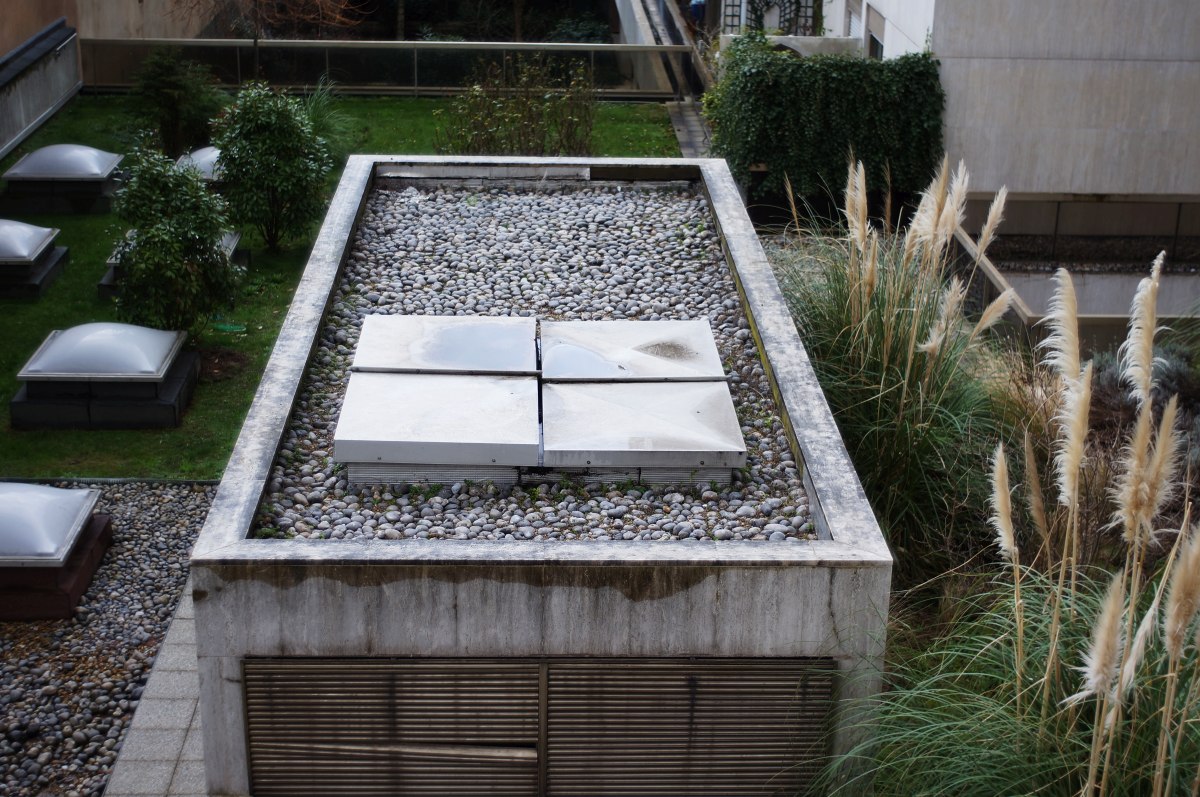
And here is a side-by-side comparison of 100% unprocessed crops. So, could you tell apart the Topcor from the Hexanon?
#6

I bet you won't. Or even, as myself looking at the image in the first time, you might say: Hmm, Topcor is very well known for its special sharpness and great rendering, and as long as the left image renders a bit more details, that must be Topcor. And that'll be wrong. Because the left image is Hexanon which delivers details slightly better wide open.
#7 Time to switch off the light one more time. Here is the test scene at 3.2 or so (both lenses have half-stops between 2.8 and 4)
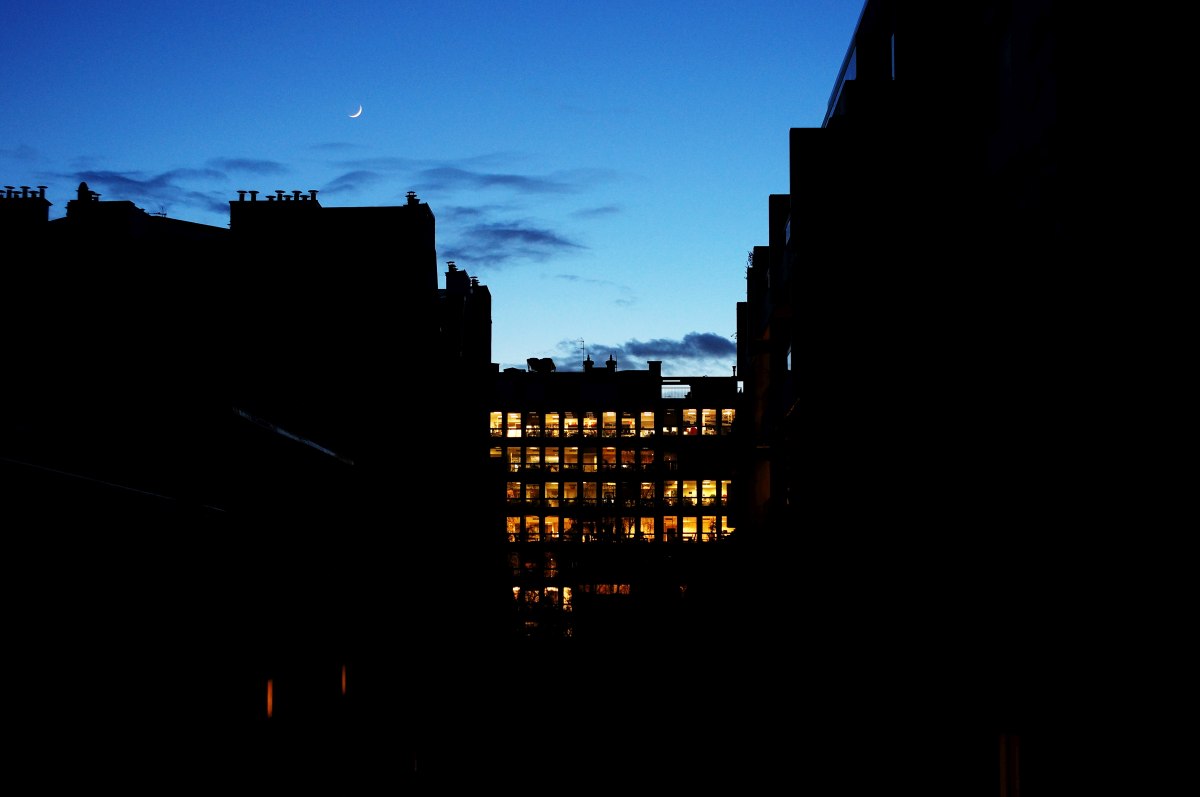
#8 And this is what we have after a 100% unprocessed crop is done. Which one is which?
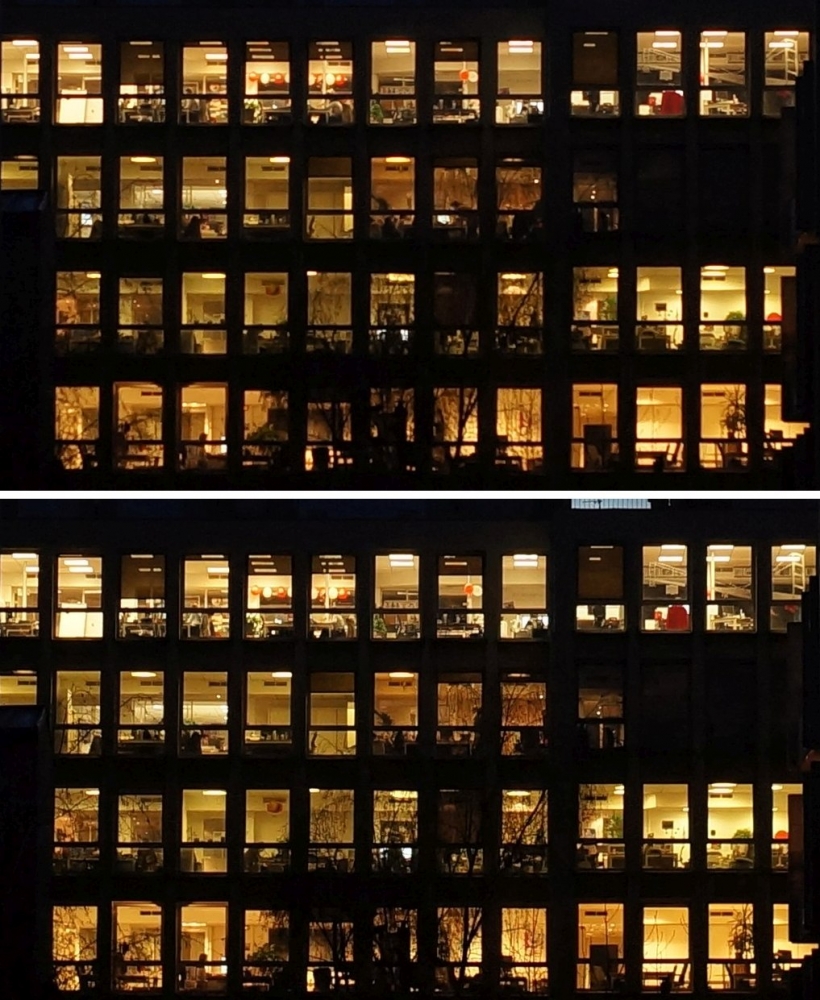
Here, I must say, there is virtually no difference in sharpness and detail. Some differences in colour tone might be an artificial Nex effect, as the camera often changes colour gradient from one shot to another when in low light. Just for reference, the top is Topcor and the lower is Konica.
And finally some pixel peeping with an indoor object, wide open, 100% crop unprocessed. Which is which?
#9
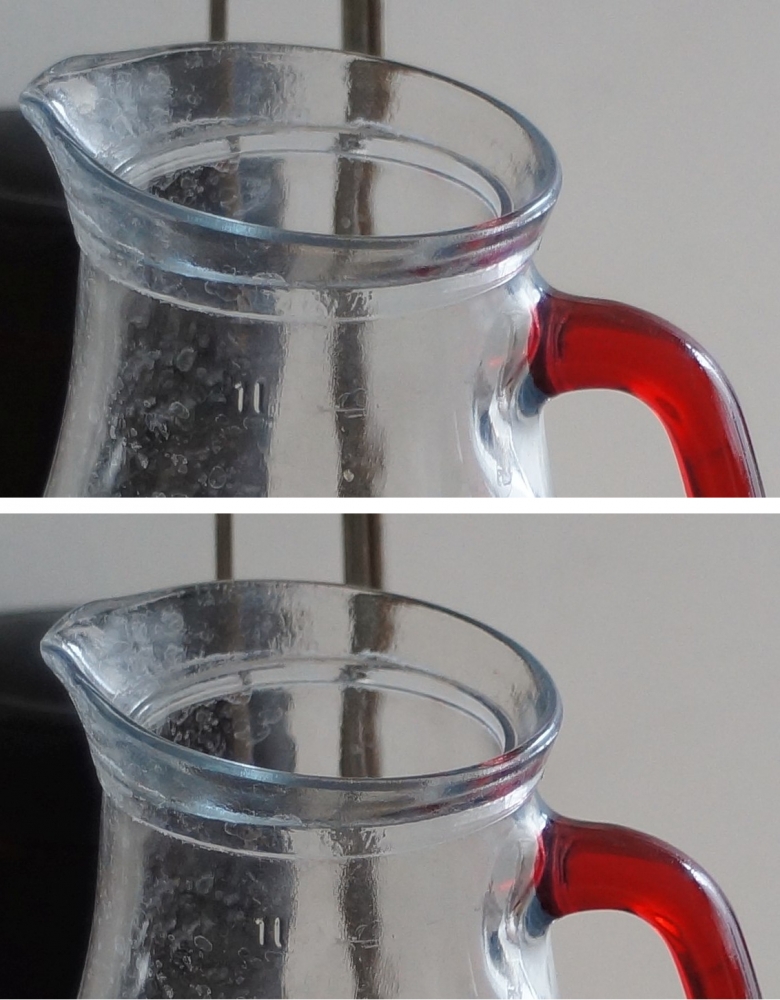
I imagine, you are alerady tired of the same question repeated so many times. For me, no particular difference, except that Hexanon (lower) confirms once again a slighly sharper rendition of details.
So, my suprise comes from what I read on Topcor distinction. I was expecting I don't no which kind of jump in image quality. And I paid for that expectation five times more expensive that for my faithful Hexanon. Well, as you might notice, it is sligtly beaten on the thread ring, so I got it cheaper than it is usually traded.
But still, is it my particular version of Topcor slightly worse than yours? Or is Re Topcor 2.8/35 slightly overrated in general, seen as a part of the bunch of glorious Topcor primes? Or, simplier, is Konica Hexanon 2.8/35 is slightly underrated?
I'd appreciate your ideas about the Topcor I got, basing on this comparison and on your own experience with the both 35mm.
And to put some entertainment at the very end, here is another real life shot taken with one of the two lenses. I gently pushed the contrast. Could you say which lens it is taken with?
#10
 |
|
| Back to top |
|
 |
y


Joined: 11 Aug 2013
Posts: 306
Location: EU
|
 Posted: Sun Jan 21, 2018 7:23 pm Post subject: Re: Re Topcor 2.8/35 vs. Konica Hexanon 2.8/35 - surprise Posted: Sun Jan 21, 2018 7:23 pm Post subject: Re: Re Topcor 2.8/35 vs. Konica Hexanon 2.8/35 - surprise |
 |
|
y wrote:
| alex ph wrote: |
But still, is it my particular version of Topcor slightly worse than yours? Or is Re Topcor 2.8/35 slightly overrated in general, seen as a part of the bunch of glorious Topcor primes? Or, simplier, is Konica Hexanon 2.8/35 is slightly underrated?
I'd appreciate your ideas about the Topcor I got, basing on this comparison and on your own experience with the both 35mm. |
First of all, the RE. Auto Topcor 35/2.8 is a nice lens. Its strong point are close ups. IMO, this is the reason it got so popular. However, the truth is its corner and inf performance is not that stunning.
You can lookup and compare the Topcor's results in a very nice test done by our fellow forum member kuuan.
Last edited by y on Sun Jan 21, 2018 10:13 pm; edited 1 time in total |
|
| Back to top |
|
 |
calvin83


Joined: 12 Apr 2009
Posts: 7555
Location: Hong Kong
|
 Posted: Sun Jan 21, 2018 7:51 pm Post subject: Posted: Sun Jan 21, 2018 7:51 pm Post subject: |
 |
|
calvin83 wrote:
Nex-5N, a camera I have used for many year, is not a very demanding camera. Both lens are good enough for the 16MP sensor. The black 35/2.8 is much more rare than the chrome one which it command a high price.
_________________
https://lensfever.com/
https://www.instagram.com/_lens_fever/
The best lens is the one you have with you. |
|
| Back to top |
|
 |
Macca

Joined: 20 Mar 2012
Posts: 248
Location: Glasgow, Scotland.
|
 Posted: Sun Jan 21, 2018 10:09 pm Post subject: Posted: Sun Jan 21, 2018 10:09 pm Post subject: |
 |
|
Macca wrote:
I`ll hazard a guess the last one is the Konica. There`s a harshness to my eye about the Konicas rendering which the Topcor doesn`t have. They aren`t as robust as Konicas and I`ve seen enough variation in my own samples of this and other Topcors to know you can get a less than perfect copy. However I agree the 35mm is better at short to medium distances, especially close ups.
_________________
Sony A7iii.
CZ Distagon 15mm 2.8,Loxia 25mm 2.4,RE Auto Topcor 35mm 2.8,Contax Zeiss 35mm1.4,Minolta M Rokkor 40mm f2, Jupiter 3 50mm 1.5, Kuribayashi CC Petri Orikkor 50mm 2,Topcor S 50mm f2,Topcor RE GN 50mm 1.8,RE Auto Topcor 58mm 1.4, Helios 44m 2,Steinheil Munchen Auto Quinon 55m 1.9,Olympus auto g zuiko 60mm f1.5 ,KMZ PO2-2M 75mm F2,Jupiter 9 85mm f2(Arsenal Kiev),RE Auto Topcor 85mm 1.8,Leica Elmarit 90mm 2.8 R, RE Auto Topcor 100mm 2.8,Meyer Orestor 100mm 2.8,,F.B.R.105mm 2.4, RE Auto Topcor 135mm 3.5,Leica Elmarit R 135mm 2.8,Steinheil Munchen Quinar VL 135mm 2.8,Contax Zeiss 100-300mm 4.5-5.6, Vernon Edonar 350mm 5.5 |
|
| Back to top |
|
 |
stevemark

Joined: 29 Apr 2011
Posts: 3952
Location: Switzerland
|
 Posted: Mon Jan 22, 2018 4:06 pm Post subject: Posted: Mon Jan 22, 2018 4:06 pm Post subject: |
 |
|
stevemark wrote:
Both the Topcor RE 2.8/35mm and the Konica Hexanon AR 2.8/35mm are constructions from the early 1960s. Their lens sections are quite similar:
http://www.artaphot.ch/topcon-re/re-auto-topcor-lenses/509-re-auto-topcor-35mm-f28
http://www.artaphot.ch/konica-ar/objektive/393-konica-hexanon-35mm-f28 (first lens section!)
Both lenses are - compared to later constructions from the mid-late 1970s (Canon nFD 2.8/35mm, Minolta MD 2.8/35mm and others) - quite poor performers.
Stephan
_________________
www.artaphot.ch |
|
| Back to top |
|
 |
Lightshow


Joined: 04 Nov 2011
Posts: 3666
Location: Calgary
|
 Posted: Mon Jan 22, 2018 4:12 pm Post subject: Posted: Mon Jan 22, 2018 4:12 pm Post subject: |
 |
|
Lightshow wrote:
Topcor lenses have a collectors aura about them, and in general, they live up to it, and Konica are more or less forgotten, their register is far too short to mount on any dslr, so they and Canon FD/FL lenses were largely forgotten during the lens adapting renaissance, and now thanks to the second renaissance thanks to Mirrorless cameras, all the orphan mounts are finally receiving their moment in the spotlight, so to speak.
I've read that Japan used Konica lenses as a standard with which to measure other Japanese lenses, I've been looking for the source of this claim, but have yet to find it.
_________________
A Manual Focus Junky...
One photographers junk lens is an artists favorite tool.
My lens list
http://www.flickr.com/photos/lightshow-photography/ |
|
| Back to top |
|
 |
papasito

Joined: 09 Jan 2015
Posts: 1659
|
 Posted: Mon Jan 22, 2018 6:44 pm Post subject: Posted: Mon Jan 22, 2018 6:44 pm Post subject: |
 |
|
papasito wrote:
I had the HEXANON 2,8/35 lens.
Good lens, it's ok.
With that lens, you get what you see.
Neutral contrast, in the way of the 60's and the first middle of 70's.
Good resolving power.
Serius 35 mm lens.
Too much neutral to me. |
|
| Back to top |
|
 |
iangreenhalgh1


Joined: 18 Mar 2011
Posts: 15679
Expire: 2014-01-07
|
 Posted: Mon Jan 22, 2018 8:58 pm Post subject: Posted: Mon Jan 22, 2018 8:58 pm Post subject: |
 |
|
iangreenhalgh1 wrote:
The 2.8/35 is a standout in the Hexanon line, it's one of the best Hexanons with really impressive IQ imho. I have four of them, an early F mount preset, an early AR mount, a later AR mount and a late AR mount which looks like the OP's copy. All of them are great, supposedly the same optics unchanged, but I find the oldest F mount is the best of the bunch as it has a level of 3D pop that would make you think it was a Zeiss T* lens, amazing for a 1960s single coated optic.
I have a silver copy of the Topcor RE Auto 2.8/35 too and imho it's almost as good as the Hexanon, but not quite and isn't quite as great as some other RE Topcors.
I'd be more than happy with either the Hexanon or Topcor, they are both in the upper echelon of 35mm lenses and easily compete with better known and more expensive lenses like the Flektogon 2.4/35, Distagon 2.8/35, Biogon 2.8/35, Curtagon 2.8/35 etc.
Anyone who calls the Topcor and Hexanon poor performers is missing the point, they are very fine lenses capable of very good performance, where they have weaknesses is in being single coated and having large front elements, so they need a hood and for the shooter to be cogniscent of the lighting conditions, particularly the position of the sun. I have several other 1960s 35s of similar construction - Canon FL 2.5/35, Meyer Primagon 4.5/35, W-Komura 2.8/35, Sankor 2.8/35 spring to mind, they are all similar in that they are very sharp, medium contrast and have something later designs lack - character. My favourite of the lot is the Primagon, despite being the oldest and slowest and most prone to flare, it has superb colours and a character and pop to it's images that really stands out. The Hexanon, the early F mount one, is probably my second favourite.
_________________
I don't care who designed it, who made it or what country it comes from - I just enjoy using it! |
|
| Back to top |
|
 |
guardian

Joined: 18 Mar 2009
Posts: 1746
|
 Posted: Mon Jan 22, 2018 10:38 pm Post subject: Posted: Mon Jan 22, 2018 10:38 pm Post subject: |
 |
|
guardian wrote:
I lack a practiced eye and never have had a keen sense regarding IQ. Nevertheless, I was quickly able to pick out the Hexanon lens straightaway. One wonders (well, at least I wonder) how much more vivid the comparison might have been had the Hexanon shots been snapped through the remarkable Hexanon 35mm f2 lens. |
|
| Back to top |
|
 |
Sciolist


Joined: 29 Mar 2017
Posts: 1445
Location: Scotland
Expire: 2021-04-16
|
 Posted: Mon Jan 22, 2018 11:23 pm Post subject: Posted: Mon Jan 22, 2018 11:23 pm Post subject: |
 |
|
Sciolist wrote:
"So, could you tell apart the Topcor from the Hexanon? "
It would be interesting to compare them on a full frame sensor if you get the chance Alex, and take corner crops to compare. Then you could see if they are still much of a muchness as individual lenses. Maybe the plaudits are related to the area of lens you're not using. Just an idea. I have no knowledge of either lens. |
|
| Back to top |
|
 |
stevemark

Joined: 29 Apr 2011
Posts: 3952
Location: Switzerland
|
 Posted: Fri Jan 26, 2018 12:15 pm Post subject: Posted: Fri Jan 26, 2018 12:15 pm Post subject: |
 |
|
stevemark wrote:
| Sciolist wrote: |
"So, could you tell apart the Topcor from the Hexanon? "
It would be interesting to compare them on a full frame sensor if you get the chance Alex, and take corner crops to compare. Then you could see if they are still much of a muchness as individual lenses. Maybe the plaudits are related to the area of lens you're not using. Just an idea. I have no knowledge of either lens. |
We can do that. And add a Minolta MD-III 2.8/35mm which performs as good as the Sony Zeiss ZE 2.8/35mm on 43MP FF:
http://www.artaphot.ch/minolta-sr/objektiv-vergleiche/434-sony-a7rii-and-summilux-1-4-35mm-asph-sony-zeiss-fe-2-8-35mm-and-minolta-md-2-8-35mm
Stephan
_________________
www.artaphot.ch |
|
| Back to top |
|
 |
alex ph

Joined: 16 Mar 2013
Posts: 1669
|
 Posted: Sun Jan 28, 2018 5:10 am Post subject: Posted: Sun Jan 28, 2018 5:10 am Post subject: |
 |
|
alex ph wrote:
Sorry, fellows, for my belated reaction. Had some work to do.
Macca, what an eye! You are right grasping Hexanon in the last shot. Even though I ask myself why you qualify that look as "harshness". Very interesting how you grasped the character.
Guardian, same to you: amazing how you could tell Hexanon in all the situations. Do you have a clue how to say it in words?
Y, thank you for the link! The comparison looks interesting. In some cases a bit difficult to say the sharpness, as there are many small objects withtin the frame. But the images give an idea of the character and the "airness" of each lens.
I think no one got my message like "Topcor is crappy". On the contrary, I was amazed by Hexanon in comparison, the lens I already liked, which reveals itself standing in the same row with the cherished Topcor. So, I am totally agree when those of you who say the Hexanon is serious and the top league lens.
Sciolist, it would be interesting indeed to compare them on FF. I don't have such an opportunity limited with an APS-C. But Stephan, if you can add your copies to the comparison list it would be really great. I am very curious (and I presume, some of the members also) to see how both lenses behave when the sensor expands up to FF.
I would like to add one touch about the Topcor. I like to shoot in the dark. And one of the points to evaluate the lens for me is the "dark test", handheld or leant on some improvised solid base, such as the top of a garbage bin or a parapet wall.
So I took the Topcor for an evening walk and should say it nicely renders colours in darkness. I am not sure it captures more of them compared to Hexanon. I would say it gives maybe in some way less natural and in the same moment more intriguing (wider?) range to colours which is easier to play with and ajust in post-processing. Here are some samples at f4, all colour corrected:
#1
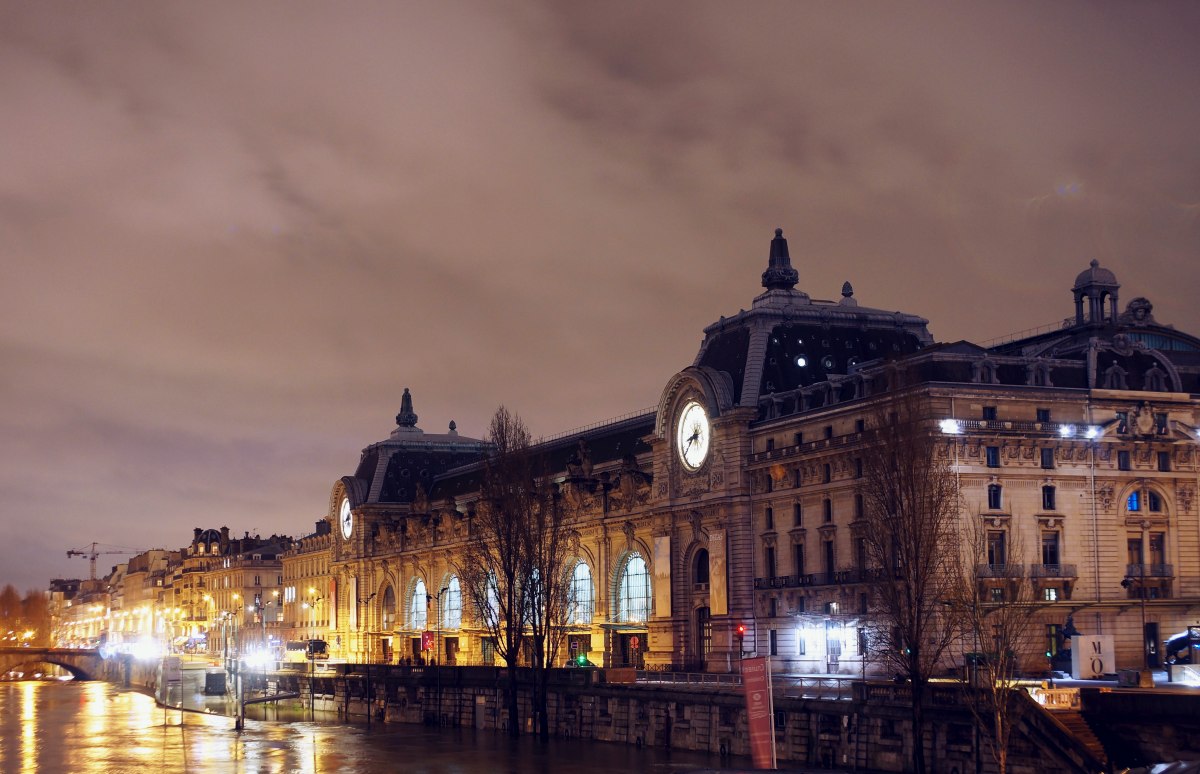
#2 A 100% crop, unprocessed
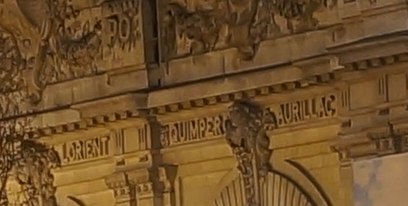
#3
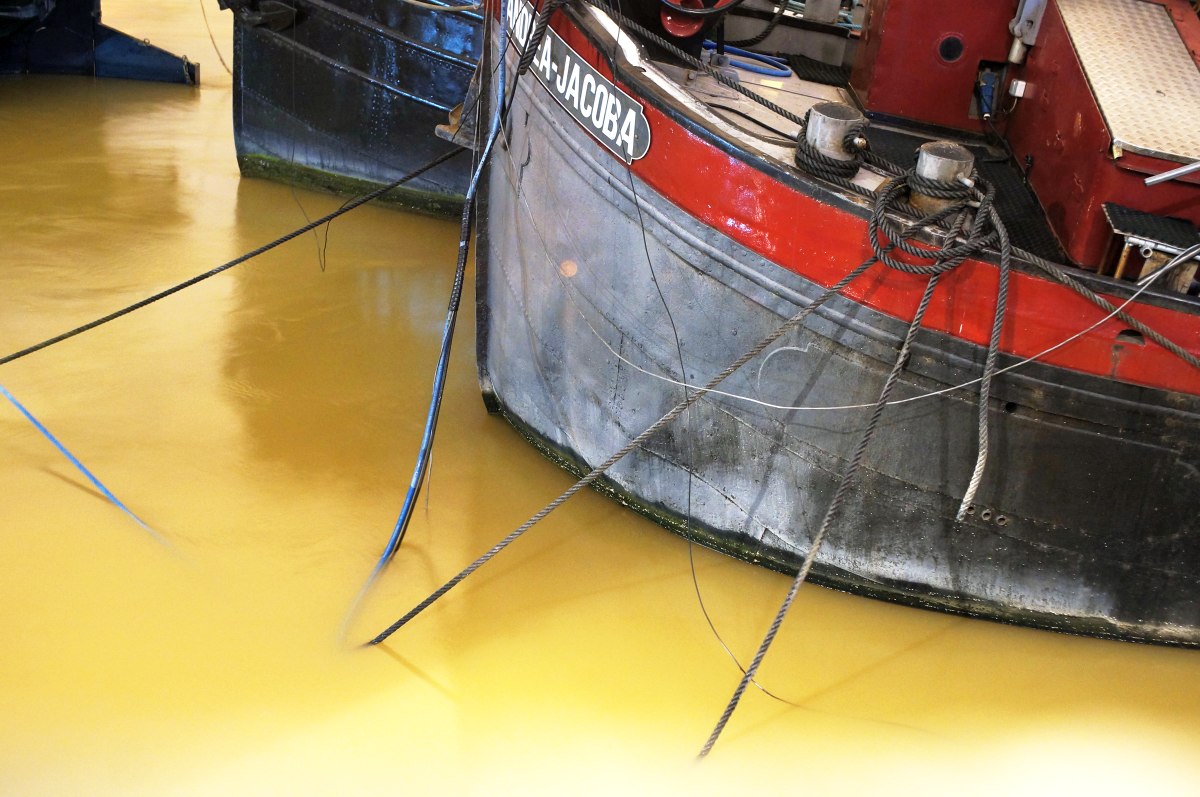
#4 A 100% crop, unprocessed
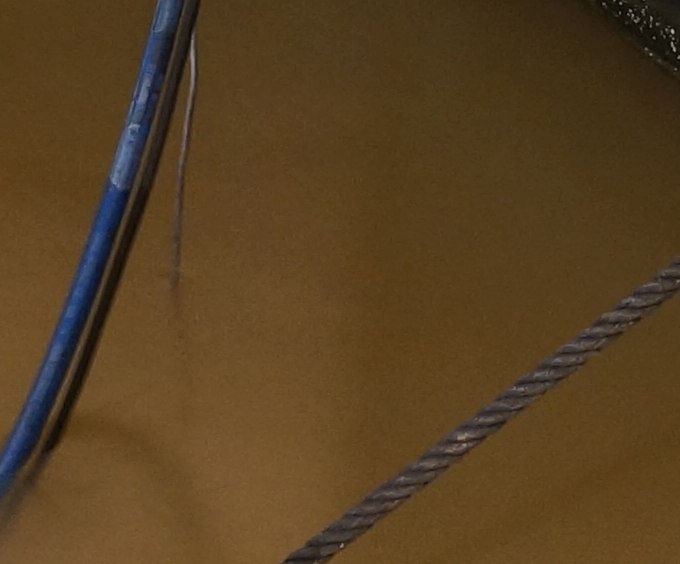
#5
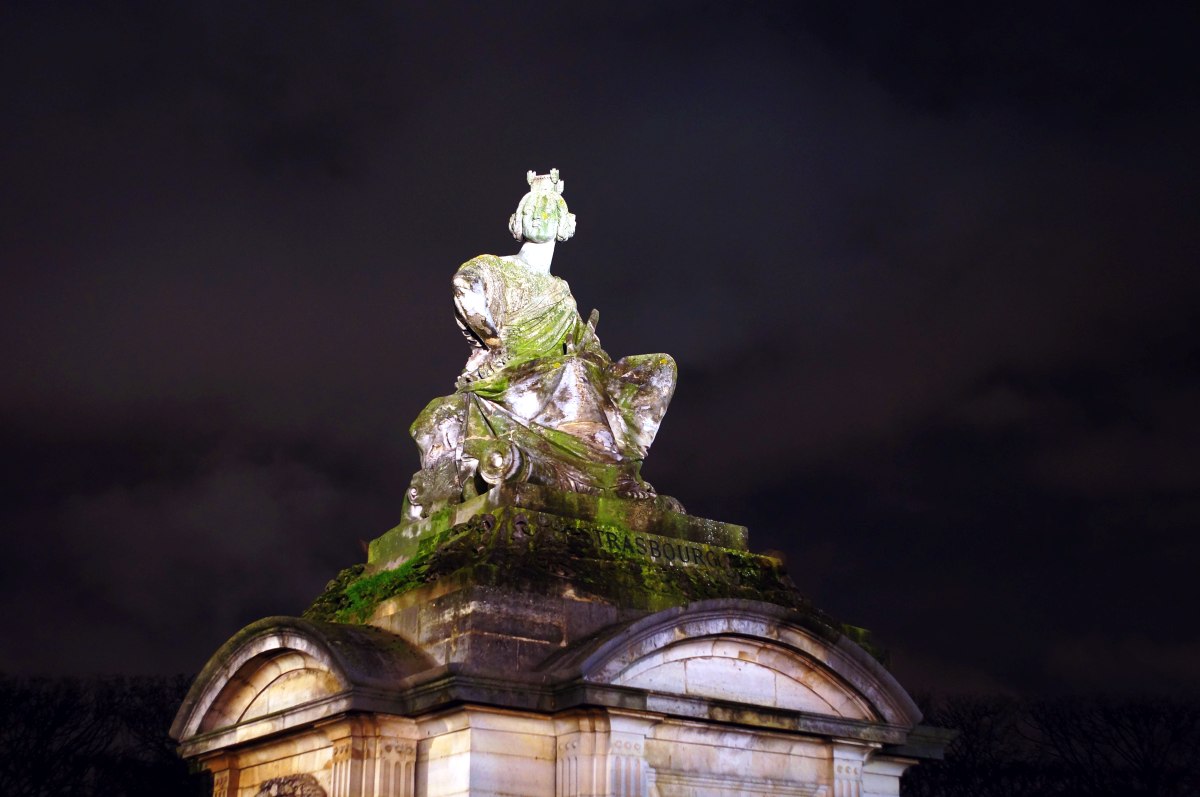
#6 A 100% crop, unprocessed
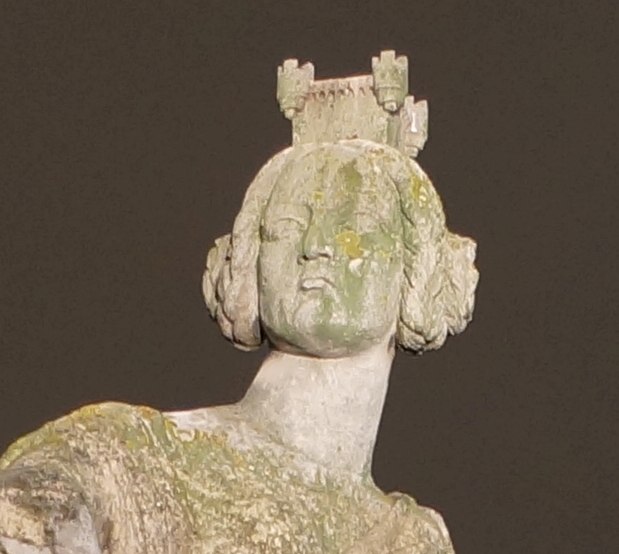
#7
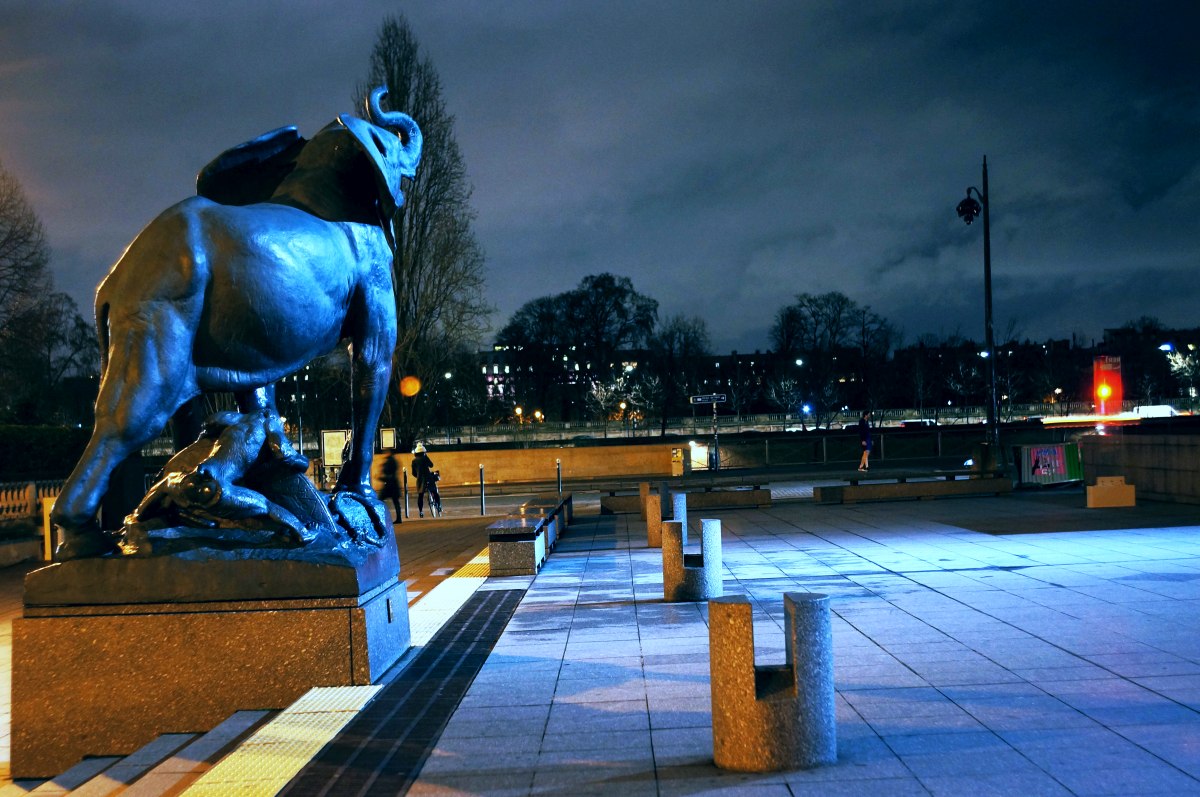
A very fine lens indeed. |
|
| Back to top |
|
 |
konicamera


Joined: 03 May 2009
Posts: 746
Location: Warsaw, Poland
Expire: 2014-06-14
|
 Posted: Sun Jan 28, 2018 5:43 am Post subject: Posted: Sun Jan 28, 2018 5:43 am Post subject: |
 |
|
konicamera wrote:
Eh, ho! Y'a d'la flotte... 
_________________
L'homme s'ennuie du bien, cherche le mieux, trouve le mal, et s'y soummet, crainte du pire. - Duc François-Gaston de Lévis
While it is nice to be important, it's more important to be nice.
URL: www.konicafiles.com
|
|
| Back to top |
|
 |
stevemark

Joined: 29 Apr 2011
Posts: 3952
Location: Switzerland
|
 Posted: Wed Jan 31, 2018 6:27 pm Post subject: Posted: Wed Jan 31, 2018 6:27 pm Post subject: |
 |
|
stevemark wrote:
| iangreenhalgh1 wrote: |
The 2.8/35 is a standout in the Hexanon line, it's one of the best Hexanons with really impressive IQ imho. I have four of them, an early F mount preset, an early AR mount, a later AR mount and a late AR mount which looks like the OP's copy. All of them are great, supposedly the same optics unchanged, but I find the oldest F mount is the best of the bunch as it has a level of 3D pop that would make you think it was a Zeiss T* lens, amazing for a 1960s single coated optic.
...
|
Here's an image taken with the Hexanon AR 2.8/35mm at f2.8, resized from 24MP to 1.5 (!) MP.
Even at this very low resolution we can see the typical problems of 1960s retrofocus wideangles (e. g. coma and field curvature).
I certainly wouldn't call this image quality "impressive"! Other contemporary 2.8/35mm lenses usually have the same problems.

Now lets look at the first new-generation 2.8/35mm, the [5/5] MD 2.8/35mm from Minolta (patented 1975):
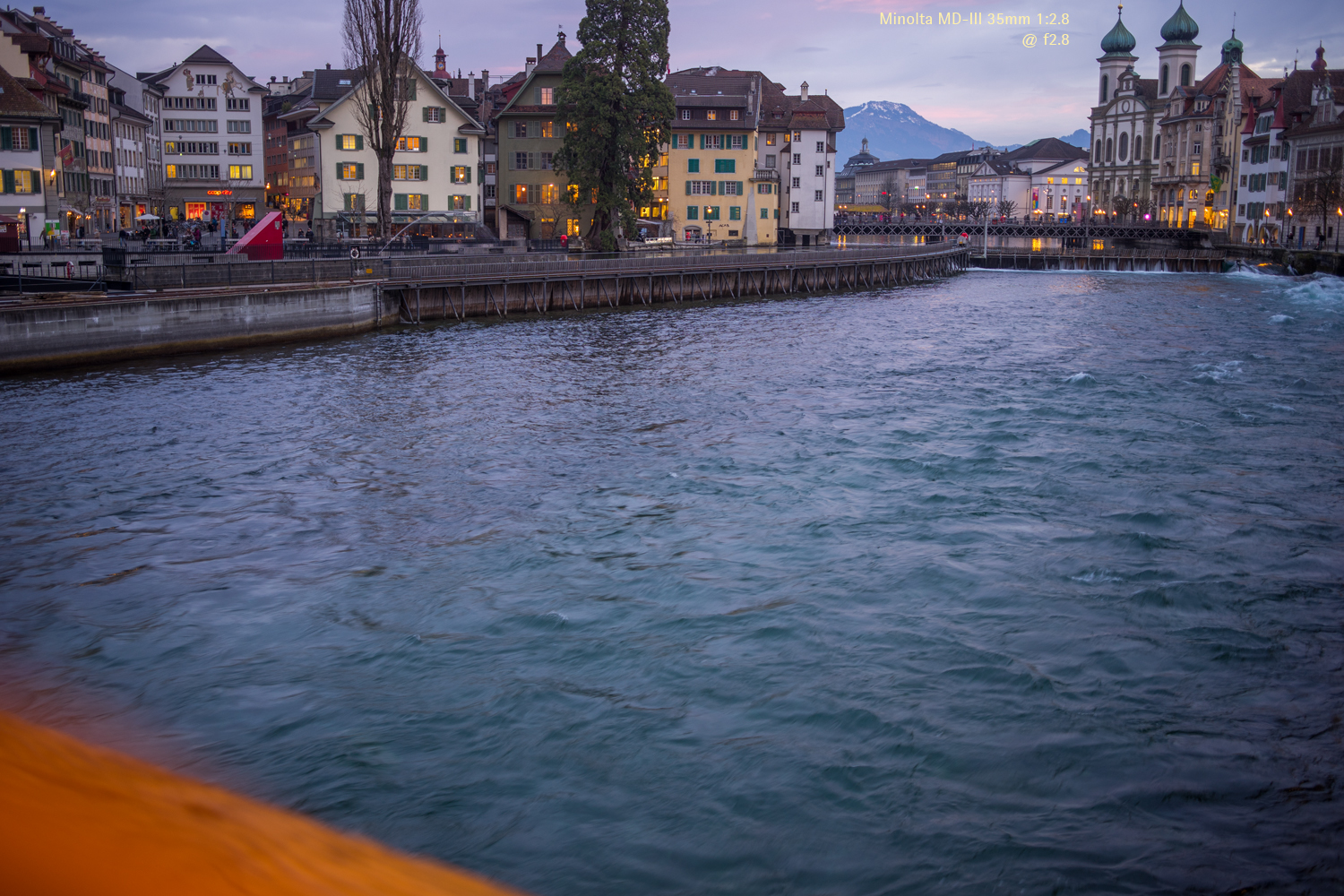
The better image quality is obvious, even at 1.5MP!
And here are 100% crops from the corners of 24MP FF images from five 2.8/35mm lenses, three of them "1960s second generation", two of them "1970s third generation":

And here a few 100% crops from the field:

Again it is obvious that the two lenses from 1975-1980 are much better corrected than the three lenses from the 1960s.
Stephan
_________________
www.artaphot.ch |
|
| Back to top |
|
 |
Sciolist


Joined: 29 Mar 2017
Posts: 1445
Location: Scotland
Expire: 2021-04-16
|
 Posted: Wed Jan 31, 2018 6:50 pm Post subject: Posted: Wed Jan 31, 2018 6:50 pm Post subject: |
 |
|
Sciolist wrote:
Nice job Stephan  . . |
|
| Back to top |
|
 |
iangreenhalgh1


Joined: 18 Mar 2011
Posts: 15679
Expire: 2014-01-07
|
 Posted: Wed Jan 31, 2018 7:32 pm Post subject: Posted: Wed Jan 31, 2018 7:32 pm Post subject: |
 |
|
iangreenhalgh1 wrote:
Well, no-one shoots a landscape/cityscape wide open, that's just bad technique.
Secondly, how many copies of this lens have you tested? Sadly I don't have a FF camera that will mount them as I have four copies from the earliest F mount preset to the last rubber grip one in AR mount. I suppose I could them on a Konica SLR, then again I don't actually care enough about the corner performance at full aperture to bother.
I've said it before and it bears repeating, the corner performance at full aperture is not the only characteristic of a lens to consider.
The Hexanon 2.8/35 is a very capable lens, yes, there may be better 35mm lenses, but that doesn't make the Hexanon a poor one, just one that has limitations in it's performance envelope and a good photographer would learn those limitations and work within them.
I mean, what if this was the 1960s and no better lens was available? What would you do, sit around bemoaning the 'poor performance' of your lens and waiting for better lenses to be developed and mass produced, or would you do the sensible thing and learn how to get the best from the lens you have by working within it's performance limitations?
Topcor RE Auto Topcor 2.8/35 on Sony a850, 24mp FF, sharp right to the corners, but of course, it's not wide open.
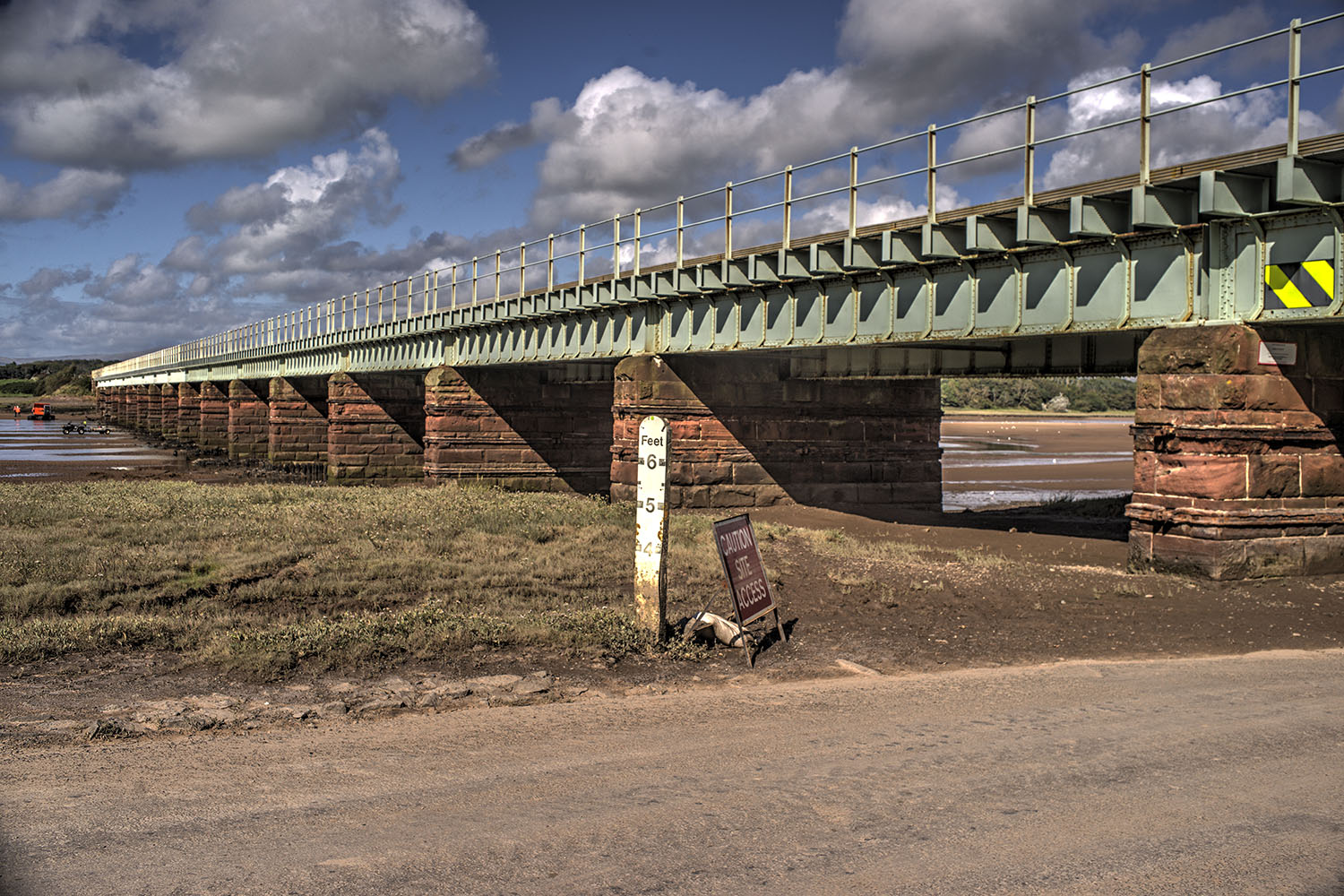
As the old saying goes, 'tis a bad workman that blames his tools'....
_________________
I don't care who designed it, who made it or what country it comes from - I just enjoy using it! |
|
| Back to top |
|
 |
guardian

Joined: 18 Mar 2009
Posts: 1746
|
 Posted: Wed Jan 31, 2018 8:15 pm Post subject: Posted: Wed Jan 31, 2018 8:15 pm Post subject: |
 |
|
guardian wrote:
| alex ph wrote: |
Guardian, same to you: amazing how you could tell Hexanon in all the situations. Do you have a clue how to say it in words?
I think no one got my message like "Topcor is crappy". On the contrary, I was amazed by Hexanon in comparison, the lens I already liked, which reveals itself standing in the same row with the cherished Topcor. So, I am totally agree when those of you who say the Hexanon is serious and the top league lens.
A very fine lens indeed. |
I surely do not think the Topcor lens comes across as "crappy". But regardless, I do not find derogatory characterizations of lenses belonging to other participants here to be good form in any instance. This is owing to awareness of copy-to-copy variations in so many of the lenses we all enjoy. A great many of them were mass produced, and such variations surely, unavoidably, exist.
I just checked my records and find I own six copies of the Hexanon f2.8 35mm. Why so many copies I have no memory or clue. They were all acquired back some years ago, most likely because the price was right. The 35mm Hexanon lenses I prize most are my two copies of the f2, one copy brand new in the original box. But do I know for certain the f2 is superior to the f2.8? Not really. |
|
| Back to top |
|
 |
stevemark

Joined: 29 Apr 2011
Posts: 3952
Location: Switzerland
|
 Posted: Fri Feb 02, 2018 9:52 am Post subject: Posted: Fri Feb 02, 2018 9:52 am Post subject: |
 |
|
stevemark wrote:
| iangreenhalgh1 wrote: |
| Well, no-one shoots a landscape/cityscape wide open, that's just bad technique. |
It used to be bad technique 50 years ago. Theses days we have lenses - be it manual focusing or AF - which are fully usable for landscape photography when used wide open. Such lenses are very useful in certain low light conditions. Most of my Italian images are made either at dawn or after sunset in quickly chanching conditions. On a good day i may have 15-30 minutes to shoot those images that are printed in books. I'm running from ona place to another, and not having to use a tripod really increases my chances of success. Of course there are also situations where a tripod is a must.
In addition i often publish architectural indoor shoots taken without tripod. Getting the allowance for using a tripod in Italy can be a real pain, and being able to use my ZA 16-35mm @16mm or the Loxia 21mm wide open is really helpful, especially together with the image stabilizer of the A900 or the A7II series.
| iangreenhalgh1 wrote: |
Secondly, how many copies of this lens have you tested? |
Two copies.
| iangreenhalgh1 wrote: |
Sadly I don't have a FF camera that will mount them as I have four copies from the earliest F mount preset to the last rubber grip one in AR mount. I suppose I could them on a Konica SLR, then again I don't actually care enough about the corner performance at full aperture to bother.
I've said it before and it bears repeating, the corner performance at full aperture is not the only characteristic of a lens to consider. |
That's absolutely right. And I absolutely agree with you that in some circumstances the "glow" of the 1960 retrofocus lenses @ f2.8 can be very useful. But knowing the different lenses and choosing the appropriate one for each purpose is a lot of fun, believe me 
| iangreenhalgh1 wrote: |
I mean, what if this was the 1960s and no better lens was available? What would you do, sit around bemoaning the 'poor performance' of your lens and waiting for better lenses to be developed and mass produced, or would you do the sensible thing and learn how to get the best from the lens you have by working within it's performance limitations? |
As is said in another posting some days ago, most of the great photographers (but not all, either ...) of the past and the present did/do use the very best gear available to them. That must have a reason. [/quote]
| iangreenhalgh1 wrote: |
As the old saying goes, 'tis a bad workman that blames his tools'.... |
You have repeated that saying many times - but at least here in Switzerland most workmen proudly use the best tools available. It may be different in Britain, though 
Stephan
_________________
www.artaphot.ch |
|
| Back to top |
|
 |
iangreenhalgh1


Joined: 18 Mar 2011
Posts: 15679
Expire: 2014-01-07
|
 Posted: Fri Feb 02, 2018 1:24 pm Post subject: Posted: Fri Feb 02, 2018 1:24 pm Post subject: |
 |
|
iangreenhalgh1 wrote:
My god, you talk a lot and say very little worth hearing.
How did we ever manage on this forum before we had this Swiss know-it-all to tell us how to think...
_________________
I don't care who designed it, who made it or what country it comes from - I just enjoy using it! |
|
| Back to top |
|
 |
Lightshow


Joined: 04 Nov 2011
Posts: 3666
Location: Calgary
|
 Posted: Fri Feb 02, 2018 1:39 pm Post subject: Posted: Fri Feb 02, 2018 1:39 pm Post subject: |
 |
|
Lightshow wrote:
Play nice.
_________________
A Manual Focus Junky...
One photographers junk lens is an artists favorite tool.
My lens list
http://www.flickr.com/photos/lightshow-photography/ |
|
| Back to top |
|
 |
Sciolist


Joined: 29 Mar 2017
Posts: 1445
Location: Scotland
Expire: 2021-04-16
|
 Posted: Fri Feb 02, 2018 2:41 pm Post subject: Posted: Fri Feb 02, 2018 2:41 pm Post subject: |
 |
|
Sciolist wrote:
| Lightshow wrote: |
| Play nice. |
It's why we're not allowed new lenses. *sigh*. |
|
| Back to top |
|
 |
TeemÅ

Joined: 07 Apr 2016
Posts: 586
Location: Australia
|
 Posted: Fri Feb 02, 2018 3:04 pm Post subject: Posted: Fri Feb 02, 2018 3:04 pm Post subject: |
 |
|
TeemÅ wrote:
| iangreenhalgh1 wrote: |
Well, no-one shoots a landscape/cityscape wide open, that's just bad technique.
|
I don't always take a tripod, or in certain spaces one is not available at all. The whole point of having a wide aperture available is that you can get an image that with a slower lens you otherwise couldn't. I've taken a few images on film, landscapes, wide open or only 1 stop down with a variety of lenses from 24mm to 300mm and I've never found them to be critically mushy due to the aperture. In fact, there is always the shortcoming of my own technique in mitigating other factors that reduce image quality - handshake, shutter shake, incorrect/inaccurate focus - and the environment (heat haze, wind). Some of my favourite images thus far have been the ones that are not technically perfectly executed. It's important to know the characteristics of one's lenses wide open to know if an image is worthwhile capturing with the widest apertures or coming back at a better time with more light. If the subject is compelling, dodgy corners don't necessarily matter that much. |
|
| Back to top |
|
 |
tb_a


Joined: 26 Jan 2010
Posts: 3678
Location: Austria
Expire: 2019-08-28
|
 Posted: Fri Feb 02, 2018 4:30 pm Post subject: Posted: Fri Feb 02, 2018 4:30 pm Post subject: |
 |
|
tb_a wrote:
| stevemark wrote: |
| iangreenhalgh1 wrote: |
| Well, no-one shoots a landscape/cityscape wide open, that's just bad technique. |
It used to be bad technique 50 years ago. Theses days we have lenses - be it manual focusing or AF - which are fully usable for landscape photography when used wide open. Such lenses are very useful in certain low light conditions. Most of my Italian images are made either at dawn or after sunset in quickly chanching conditions. On a good day i may have 15-30 minutes to shoot those images that are printed in books. I'm running from ona place to another, and not having to use a tripod really increases my chances of success. Of course there are also situations where a tripod is a must.
In addition i often publish architectural indoor shoots taken without tripod. Getting the allowance for using a tripod in Italy can be a real pain, and being able to use my ZA 16-35mm @16mm or the Loxia 21mm wide open is really helpful, especially together with the image stabilizer of the A900 or the A7II series. |
Lenses like the Zeiss Loxia 21mm which are indeed able to produce sharp corner to corner pictures already wide open are still a very rare breed, even today. 99% of all lenses will operate best when used stopped down at least a little bit. Not everybody is willing or able to invest 1500 Euro/USD or even much more for such a lens like this Loxia, particularly when photography is just a hobby like for the most of us here.
To the best of my knowledge I don't have a single lens with fastest aperture of F2.8 or faster which wouldn't increase it's quality when stopped down, not even rather expensive APO ones which would at least deliver acceptable quality wide open. I would therefore never shoot landscapes/architecture fully open as well as my intention is always to reach maximum possible quality with the equipment I have. That's also the reason why I ALWAYS shoot at minimum ISO setting, even at night.
Only for very rare occasions I would change my mind if the decision would be either to have no picture at all or just a mediocre one.
Maybe that's old school, I don't know.
Just my two cents.
_________________
Thomas Bernardy
Manual focus lenses mainly from Minolta, Pentax, Voigtlaender, Leitz, Topcon and from Russia (too many to be listed here).
Last edited by tb_a on Fri Feb 02, 2018 5:08 pm; edited 1 time in total |
|
| Back to top |
|
 |
iangreenhalgh1


Joined: 18 Mar 2011
Posts: 15679
Expire: 2014-01-07
|
 Posted: Fri Feb 02, 2018 4:54 pm Post subject: Posted: Fri Feb 02, 2018 4:54 pm Post subject: |
 |
|
iangreenhalgh1 wrote:
Well said.
I agree, shooting a landscape wide open would be a matter of last resort.
_________________
I don't care who designed it, who made it or what country it comes from - I just enjoy using it! |
|
| Back to top |
|
 |
stevemark

Joined: 29 Apr 2011
Posts: 3952
Location: Switzerland
|
 Posted: Fri Feb 02, 2018 5:35 pm Post subject: Posted: Fri Feb 02, 2018 5:35 pm Post subject: |
 |
|
stevemark wrote:
| tb_a wrote: |
...
To the best of my knowledge I don't have a single lens with fastest aperture of F2.8 or faster which wouldn't increase it's quality when stopped down, not even rather expensive APO ones which would at least deliver acceptable quality wide open. |
It depends on what you are doing. I am usually being paid for my images which means i must deliver e. g. 100 images for a book with a given budget. Of course i can, carefzlly and with tripod, take the images - some with good light, some with boring light, one or two with excellent light. That's what most average professionals do.
I prefer to shoot as much images in excellent light. Last time i was in Rome for two weeks (november, best time of the year) i had three days with completely clear air. During these three days, i had 1-2 hours per day where the light was beautifiul (late afternoon, early evening). And during these very few hours i took most of the images to be published. I was working very quickly, on different locations all over the city.
And i can tell you that any of my clients prefers those f2.8 (or whatever) images when they are printed  . For them (!) the increase in quality between f4 and f8 is negligeable if i use the best lenses available. But i would loose many saleable images if i would work slowly, with tripod and/or too heavy equippment. . For them (!) the increase in quality between f4 and f8 is negligeable if i use the best lenses available. But i would loose many saleable images if i would work slowly, with tripod and/or too heavy equippment.
Stephan
_________________
www.artaphot.ch |
|
| Back to top |
|
 |
|
|
